In 2014 the world was introduced to Patchwork, a game about managing time and using buttons to build the most beautiful, and most bountiful quilt. Its pleasing aesthetic mixed with its deceptively simple game play quickly turned it into a worldwide phenomenon. Since its initial release, Patchwork has received multiple makeovers resulting in several special editions such as a Christmas, an Americana, a Chinese Folklore, and most recently, even a Valentine’s Day edition. Aside from these thematic revisitings, Patchwork has also spawned two distinct other versions of the game that are more than cosmetic, the subjects of this review: 2016’s Patchwork Doodle (Uwe Rosenberg’s grand entry into the “roll and write” arena) and 2018’s Patchwork Express.
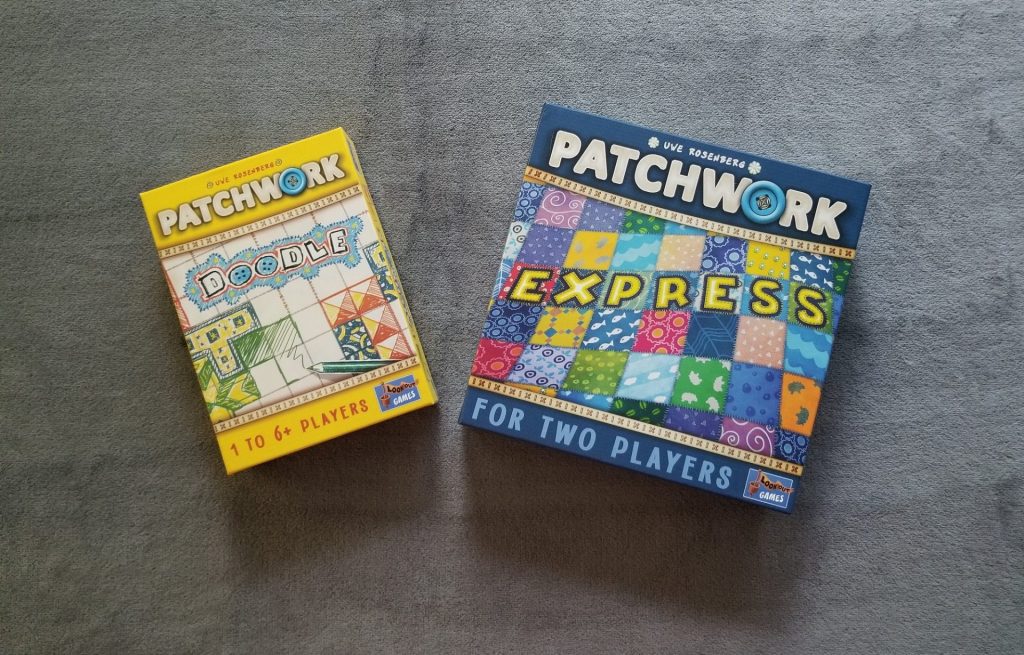
Maybe you’ve seen one of these titles sitting on a shelf of your friendly local game store or perhaps you’ve seen one come up for auction somewhere. Wherever you saw them, maybe you wondered what made them so different and why you might want to buy them instead of just regular old Patchwork. If that sounds like you, then this review is for you.
I’ve already described how to play Patchwork in my review and you can go check that out if you’re curious. This review assumes you’ve already played Patchwork at some point. While knowing how to play isn’t critical, having that knowledge is going to be useful as I am going to be doing some comparing and contrasting. And with that out of the way, let’s dig in, shall we?
Patchwork Doodle
Now, I introduced Patchwork Doodle (Doodle) as Uwe Rosenberg’s first foray into the realm of ‘roll and write’ games and that isn’t technically correct. Doodle is actually a ‘flip and fill’ game. The players begin the game with a sheet of paper and a pencil, cards are flipped, and the information presented on those cards is used to write things onto the paper. The two goals are essentially the same ones you have when playing Patchwork: score the most points and create an awesome quilt.
Unlike Patchwork where all of the polyominoes are visible from the get-go, only a few will be revealed at a time in Doodle. The tiles present in Patchwork have been replaced by a deck of cards with polyomino shapes drawn on them here. Before the game begins, this deck is shuffled and placed face down. Eight of these cards are drawn and placed in a circle, face up, around the deck of cards. Then the pawn is placed in between two of these face up cards (selected at random). The die is placed close by.

Then each player receives a sheet from the pad, a pencil, and a randomly drawn Start card. This card features a size seven patch which the players will draw onto their sheets in a location of their choosing. This shape, like all of the shapes in the game, can be flipped or spun around any way they like. In another differentiation between the two games, there is no starting player in Doodle. Players will be taking their turns simultaneously. So once you’ve completed these setup steps, you’re ready to start playing.
During the course of a round (of which there are three), the die is going to be rolled six times. Each time the die is rolled, move the pawn ahead that number of cards. So, if you roll a two, for instance, you’ll move the pawn from its starting position in-between two cards onto the second card, clockwise, from that position. Then the players must draw that card onto their sheet if they choose (it’s optional). After drawing the patch onto their sheet, the current card is discarded and the process is repeated.
After the sixth patch card has been discarded, an end-of-round scoring is performed. The scoring is a little weird and it takes some getting used to, but it works thusly: draw a rectangle around a cluster of filled in spaces. Then find the largest square within that rectangle and score a point for each space that square is composed of. Every additional row or column within that rectangle will score an additional point. So, obviously, you’ll want to draw your rectangle around the cluster that will score you the most points.
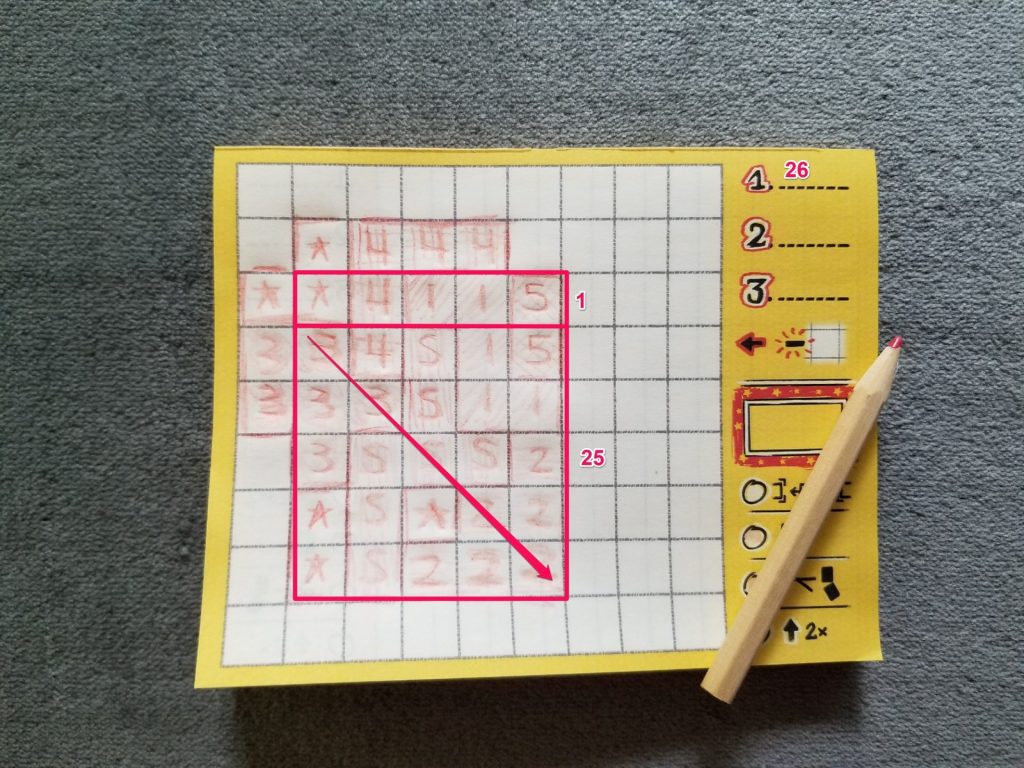
If you’ve ever played Patchwork before, you no doubt know how difficult it can be to fill in every single space on your board. There will often be small gaps and that creates an impetus to jockey for position to try and get as many of the single space patches that you can. Those little patches are critical. Fortunately Doodle provides you some ‘single space patch’ functionality in the form of four special single-use powers. As each power is used, it is marked off and no longer available.
The first power allows you to ignore the card the pawn currently rests upon and to draw the polyomino depicted on the card to the right or left of it instead. The second power allows you to shade in a single space. The third power allows you to perform a single cut on the current polyomino shape and draw one of the resulting two fragments onto your sheet instead of the entire shape. The fourth power allows you to re-use one of the special powers a second time. Regardless of whether or not you use your powers, once the game ends you’ll tally up the points earned from each round and then subtract one point for each empty space on your board to determine your final score. The highest score wins.
Thoughts
When I first played Doodle, I was really hoping that the game would capture the feel of Patchwork the same way that The Castles of Burgundy: the Dice Game captured the feeling of playing a game of The Castles of Burgundy. It does not. The tension that comes from having to strike a balance between managing time, earning buttons, managing your quilt (all while having to try to out-think your opponent), which is omnipresent in Patchwork, is missing entirely from Doodle. That doesn’t mean it’s a bad game, though. It just means that it’s an entirely different one. While Patchwork was a bare knuckles, back alley fight to the death, Doodle is a much friendlier affair: a pillow fight. With a fluffy pillow. Wielded by an infant. And that’s not necessarily a bad thing. It’s still a challenging game, but I don’t want you to leave this review with the impression that Doodle is just Patchwork with cards. While Doodle shares some DNA with its ancestral lineage, it’s a game that’s gone its own way, an apple that has fallen far from the tree.
Aside from the obvious difference, a card based flip and fill versus a cutthroat tile laying game, there is one other major difference between the two titles that just may tip the scale in Doodle’s favor (or at least convince you that there is room for both titles in your, no doubt, burgeoning board game collection). While Patchwork is a strictly two-player game, Doodle can be played solo or with up to four players. Another difference that might be a decision maker is that Doodle’s box is a little over half the size of Patchwork’s making an already portable game even more so. Also, while there are plenty of weird games of Patchwork that end with one person winning by having a smaller negative score than their opponent, you will never end a game of Doodle in the negatives
Of course, if you’re an Uwe Rosenberg addict like myself, there’s no question about whether or not both games belong in your collection. Of course they do!
Patchwork Express
Unlike Doodle which reimagines Patchwork in another format, Patchwork Express (Express) stays true to the gameplay that anyone who has ever played Patchwork will no doubt be familiar with. The players will be moving the pawn around the display of available tiles, selecting one to add to their quilt (paying time and/or buttons to do so), earning buttons, etc. There is no difference in the game play at all. And that might make you wonder: why bother? If the two games are essentially the same, why would you want to select one over the other?
Glad you asked.
While Patchwork and Express are nearly identical, there are a few differences in this version that just might make it the preferable version for you and yours if you’re trying to choose between the two. As the name implies, Express is a much lighter, faster playing version of Patchwork. While Patchwork features a nine by nine gaming grid, Express trims it down to a mere seven by seven. This, of course, means that Express has dropped the much sought after, often fought over seven point bonus tile.
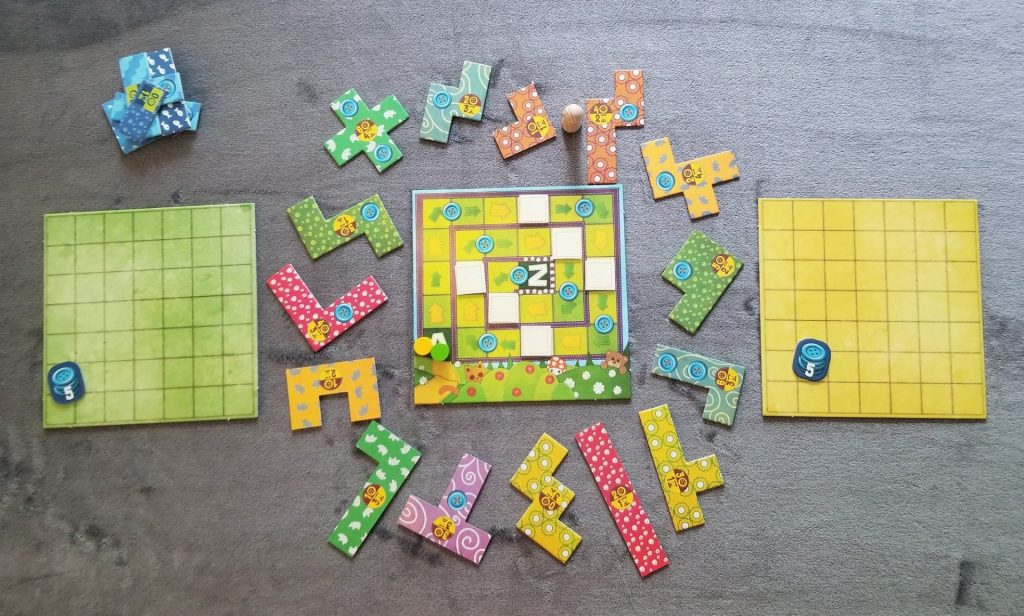
While its forebear included 33 tiles, Express only has a total of 23 which are divided into eight blue tiles and 15 colorful tiles, another area where Express differs from its predecessor. When the game is initially set up, the 15 colorful tiles are the only things on offer and the 8 blue tiles aren’t introduced until there are only five of the original tiles left. These blue tiles are designed to make it easier to fill in any empty spots you might have. Each tile is a normal shape, no weird bends or protrusions.
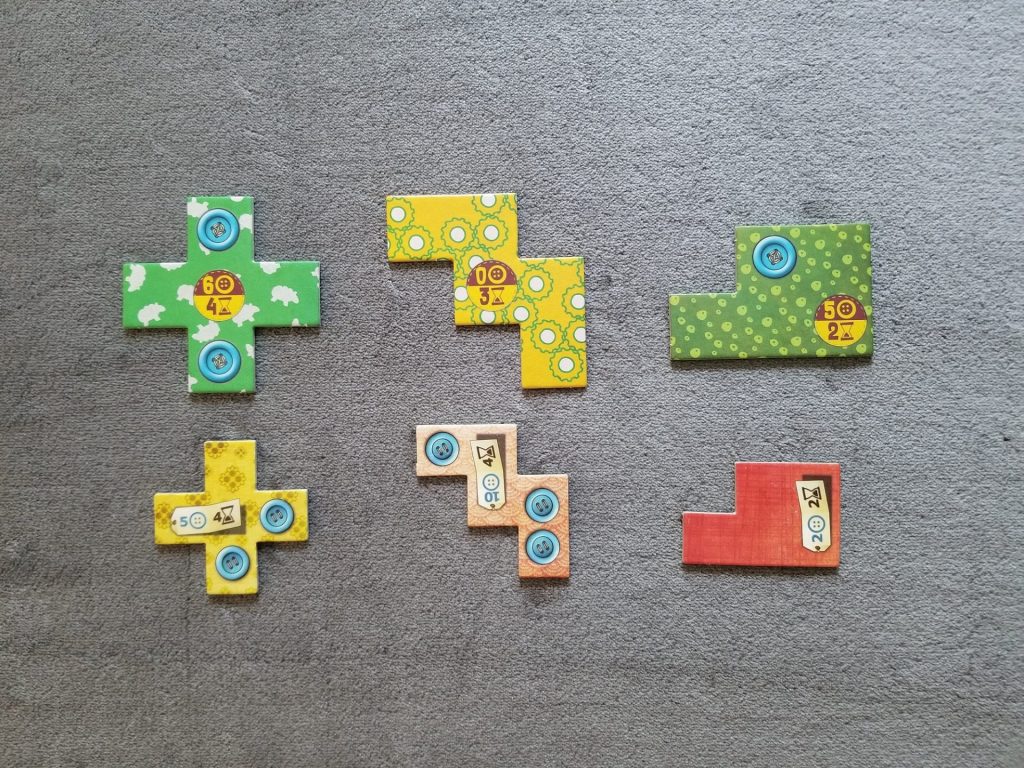
Also, since the publisher opted to stick with the same sized boards and box as Patchwork, this has the side benefit of making all of the components larger than their Patchwork-sized counterparts. Perfect for those among us who may not have the best eyesight. It also has the net effect of making the game look even more charming than it already was. Bigger is not always better, but in this instance it is.
Thoughts
So now that you know the key differences, should you buy one over the other? That depends. Are you playing two-player games primarily with someone that’s elderly or maybe has poor eyesight? Express might be the way to go. Do you already own Patchwork and are wondering if Express offers enough differentiation to add to your collection? Unless you’re an avid Uwe Rosenberg collector, probably not. Express definitely serves as a great introduction to Patchwork, but if you’re not a Rosenberg aficionado and having large, chunky pieces isn’t something you necessarily need, then you’d be better served just being introduced to Patchwork by buying Patchwork instead.


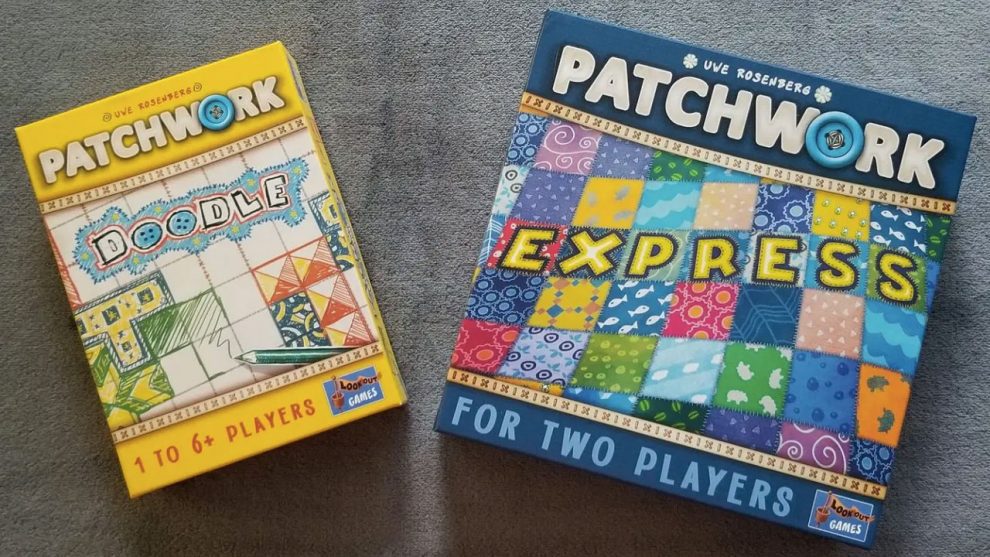









How close were your scores when playing Express? It’s interesting that they didn’t include a 5×5 tile for 5 VP in Express, but if the score difference typically is larger than this amount, I suppose it wouldn’t matter.
Thanks for the review.